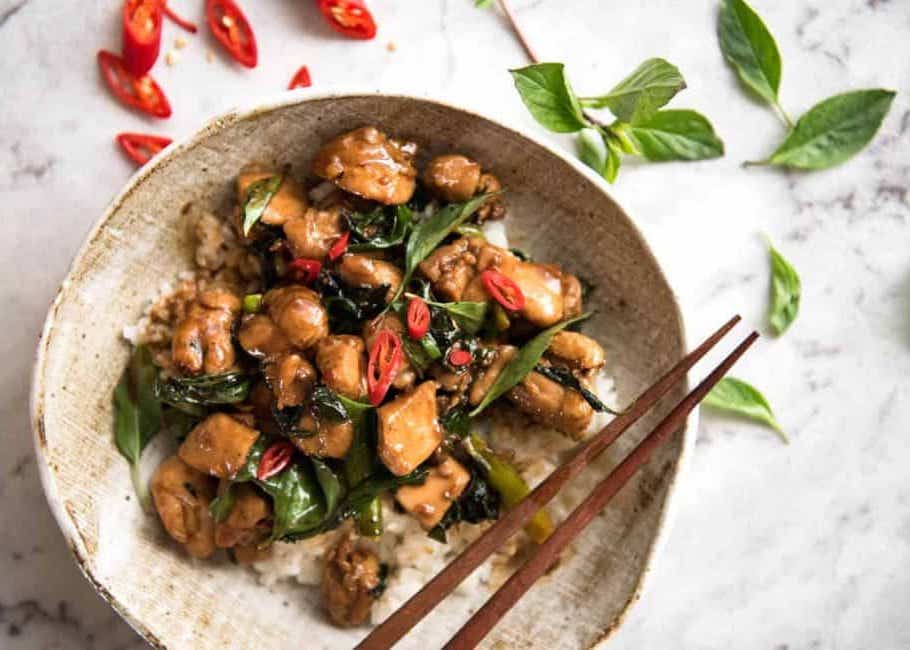Learn to grow microgreens at home, join Grow It Local +
Learn > How To
How to Grow Basil
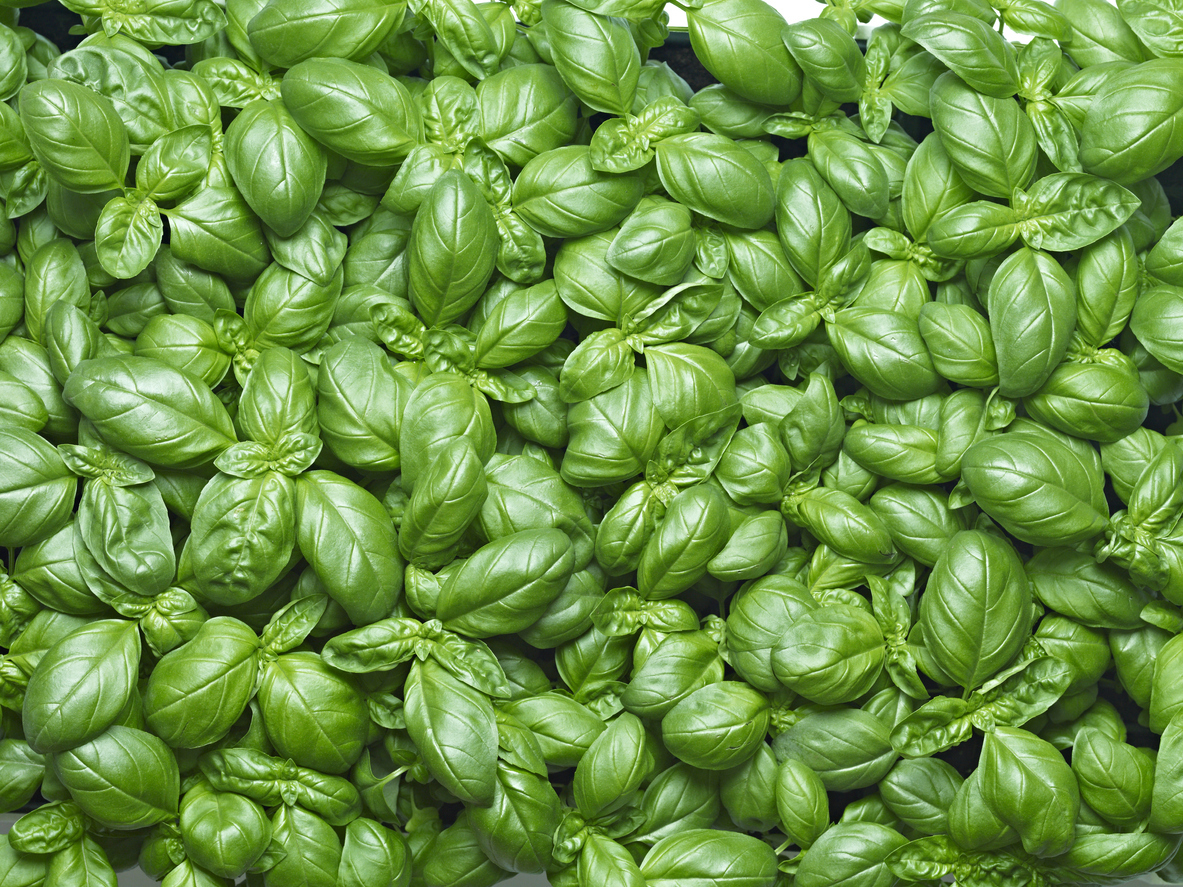
WHERE TO GROW BASIL
Basil can be grown indoors or out. In pots, in the ground, in a container or on a windowsill.
It grows best in a location that gets 6 to 8 hours of full sun daily and well-drained soil.
HEALTH BENEFITS OF BASIL
- Good for digestion: Basil helps with digestion and can be a good remedy for headaches and insomnia. The eugenol present in the leaves ensures anti-inflammatory action in the digestive tract. Basil also helps balance acid within the body and restores the body’s proper pH level.
- Anti-inflammatory: Basil has powerful anti-inflammatory properties that can help cure to a variety of diseases and disorders. Its essential oils, including eugenol, citronellol and linalool, help lower inflammation through their enzyme inhibiting properties. The anti-inflammatory properties of basil can assist to lower risk of heart disease, rheumatoid arthritis and inflammatory bowel conditions. Consumption of basil can also help with fever, headache, sore throat, cold, cough, flu.
- Healthy skin: Basil’s powerful oil helps cleanse the skin from within and is an excellent choice for those with oily skin. It helps remove dirt and impurities that clog pores. Make a paste of basil leaves, sandalwood paste and rose water. Apply the paste on your face and let it sit for 20 minutes. Wash it off with cold water. The strong anti-inflammatory and antimicrobial properties of basil would help
- Fights Depression: Basil’s essential oil can help manage depression and anxiety too. The herb is believed to stimulate neurotransmittersthat regulate the hormones responsible for inducing happiness and energy. Basil is considered as a powerful adaptogen or an anti-stress agent. Its anti-inflammatory and immune-boosting properties help manage stress too.
- Diabetes Management: Consumption of basil can help slow the release of sugar in the blood, an essential process for diabetics. The herb has very low glycemic load and the essential oil present in basil also helps cut down triglyceride and cholesterol levels, which isa persistent risk factor amongst diabetics.
- Supports Liver Function and Helps Detoxify the Body: Basil’s strong detox properties help to support positive liver health. Liver is a very essential organ for the body as it plays a crucial role in metabolism. Basil can help prevent fat build-up in the liver and keep your liver healthy.
- Promote healthy gut: Basil also helps restore the body’s natural pH levels and feeds healthy bacteria within the gut microflora. A healthy gut flora increases immunity and promotes healthy digestion.
- Heals An Upset Tummy: The essential volatile oil of basil has been seen as a traditional remedy to treat a variety of tummy problems inaddition to indigestion. Consuming basil could help reduce bloating and water retention. It can even stimulate loss of appetite and couldcure acid reflux as well.
- Cuts & Abrasions: Basil isn’t simply for internal use. When basil’s oilsare extracted to make an essential oil, it can be used for treating cuts, wounds, and skin infections.
We’ve raved about it before, Basil is a hero of the herb garden that keeps your kitchen fragranced all on its own. Here’s how to grow it.
In our eyes, Basil is a must for any home or garden. It’s a herb that’s crept its way into cuisines all around the world, from Italian pasta to fresh Vietnamese spring rolls. Whether you’ll be growing cinnamon or lemon basil, follow this guide on how to growing and make the most of this seasons harvest.
ORIGINS
Basil is one of the oldest herbs known to humankind. It is a member of the large mint family, or Lamiaceae family, along with other culinary herbs like rosemary, sage, and even lavender. It is believed that basil has origins in India, but the herb has been cultivated for over 5,000 and can today be found in corners of the planet.
From India, basil travelled not only to Europe and Africa, but spread to other parts of Asia as well, most notably to Thailand. However, some believe that this humble herb can be traced back even farther with prehistoric records from 807 A.D. suggesting that sweet basil was used in the Hunan region of China at that time. Basil eventually migrated westward as whole plants as it could be grown easily indoors and away from exposure to cold climates and frost.
Health and nutritional information
Basil is a powerful antioxidant. It’s full of polyphenolic flavonoids, which shield much of the body’s structures from cell-damaging free radicals. Free radicals can cause a lot of problems such as oxidizing cholesterol in your bloodstream, where it builds up in your arteries and raises your risk of stroke and heart attack. Asthma, certain types of arthritis, and several other ailments can also be attributed to free radicals.
Basil is a good source of magnesium and promotes blood flow. As a good source of Vitamin A it promotes healthy eyesight, and because of eugenol (a major component of the oil produced by basil’s leaves) it has also been shown to be an effective anti-inflammatory in the same vein as aspirin and ibuprofen.
In addition excellent source of vitamin K, manganese, iron, vitamin A, and vitamin C. It’s also a good source of calcium, magnesium, and omega-3 fatty acids.
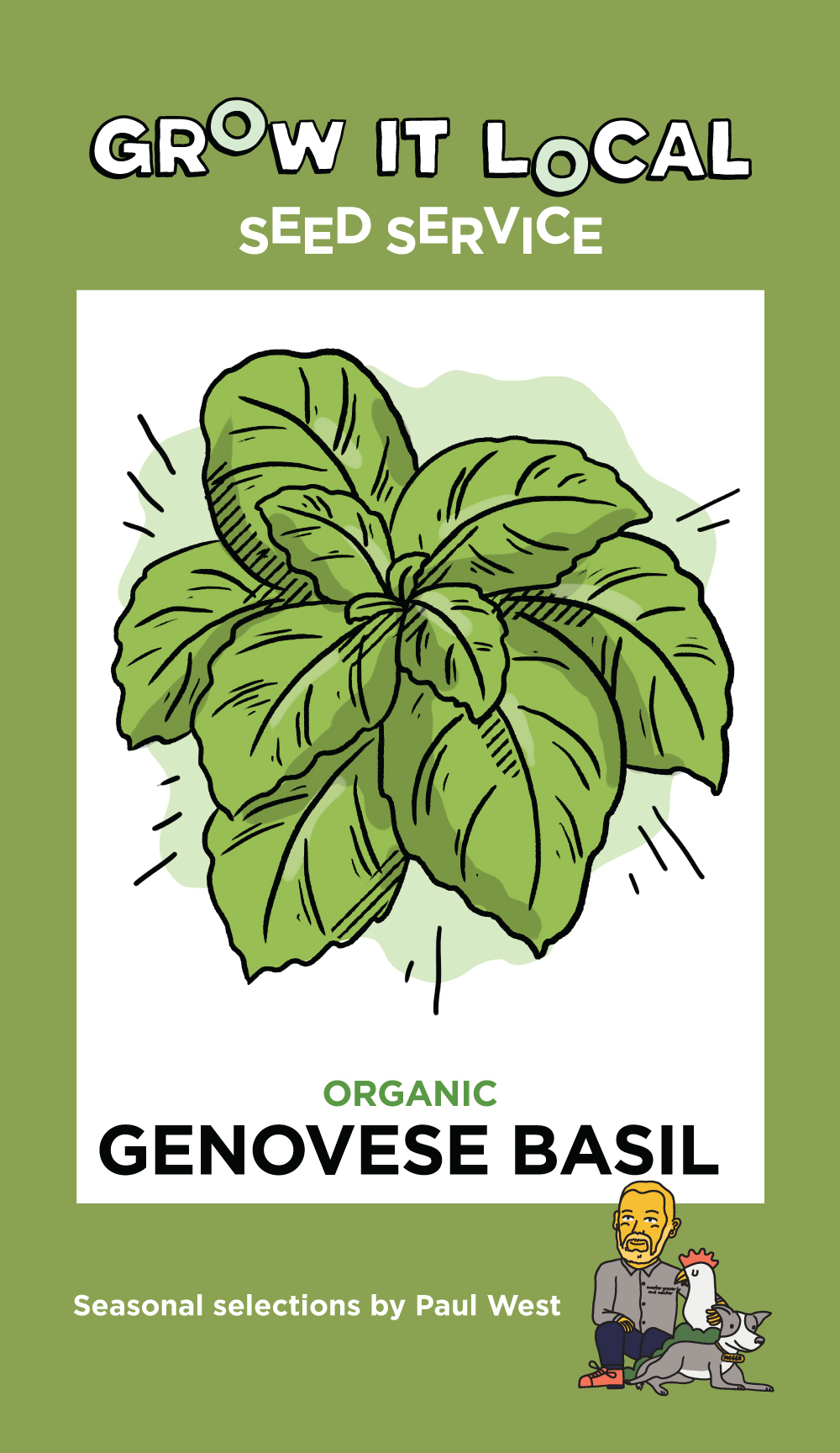
Varieties
There are so many marvellous varieties of basil, each with unique aromas and purposes. Here a few to get you started:
Genovese Basil: With its large green and fragrant leaves, the Genovese Basil is the most common used basil for pesto. Under the right conditions, this plant grows up to 80 cm high and does well in warm climates.
Thai Basil: Thai Basil has a spicy aniseed-like taste and is hugely popular in Asian cuisines. Another tall grower but its leaves are slightly smaller and more compact.
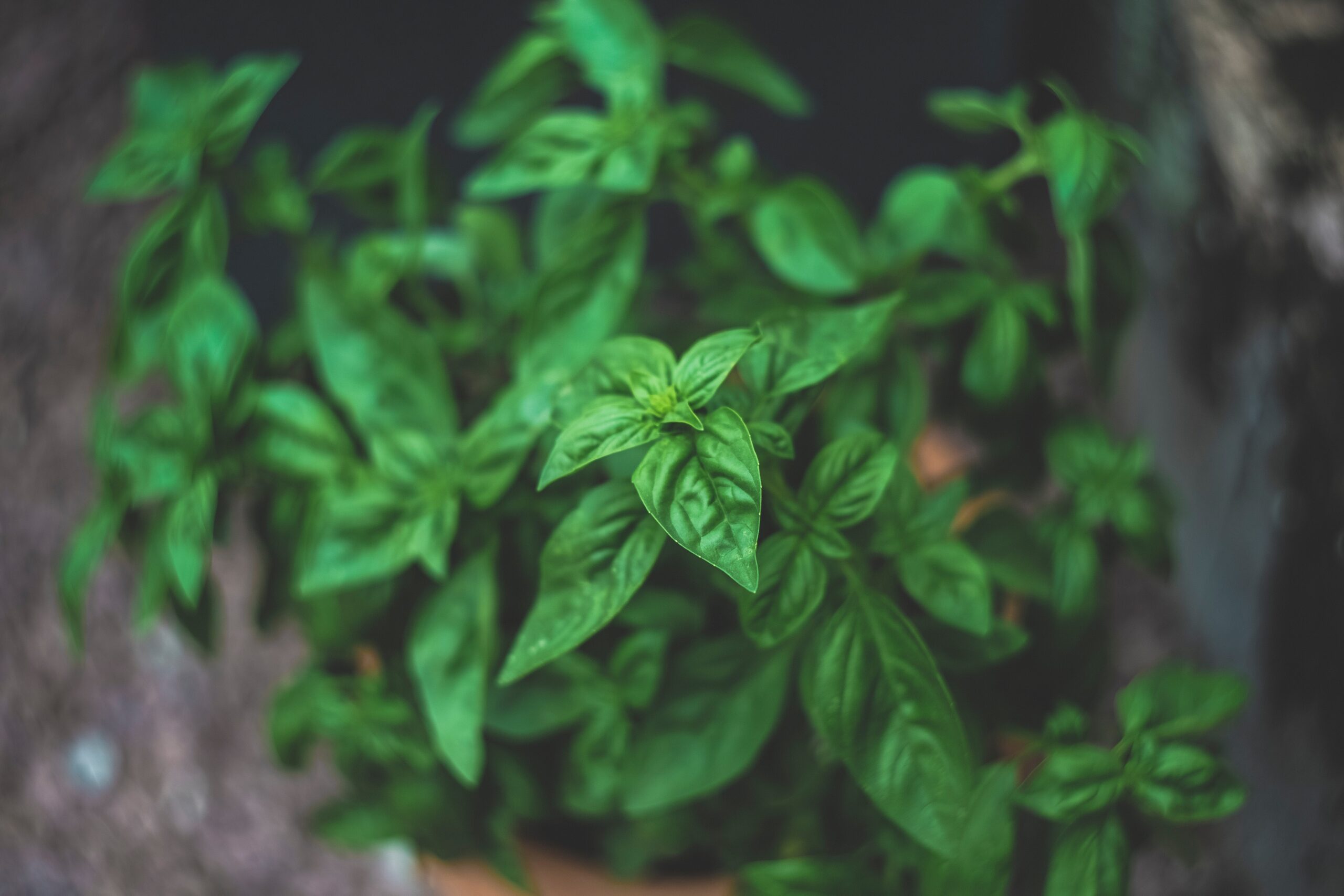
Lemon Basil: Named after it’s strong citrus aroma, Lemon basil is ideal for adding to salads. Unlike actual lemons, lemon basil does well in slightly cooler climates. It has small leaves and only grows to a height of around 40 cm.
Holy Basil: Also popular in Asian cuisine, Holy Basil has a spicy flavour. Fun fact – this variety was traditionally used as a natural insect repellent. Growing to around 50 cm, Holy Basil grows quickly and enjoys sub-tropical conditions.
Cinnamon Basil: Unlike it’s savoury cousins, cinnamon basil works well in dessert dishes. It’s also a winner in the fragrance department, offering a mix between the classic scent of Genovese basil and a warm cinnamon bun!
How to Grow Basil
Growing basil can be easy, however, it can also be a frustrating experience if you’re not prepared. Climate check! Most likely, your seeds will be happiest indoors, planted in a container at a depth of around 1 cm. If you’re blessed with a tropical climate though, you can transplant basil outside 4 – 6 weeks after planting. Keep them 25 cm apart from one another and give them lots of sun, around 6 to 8 hours of rays per day.
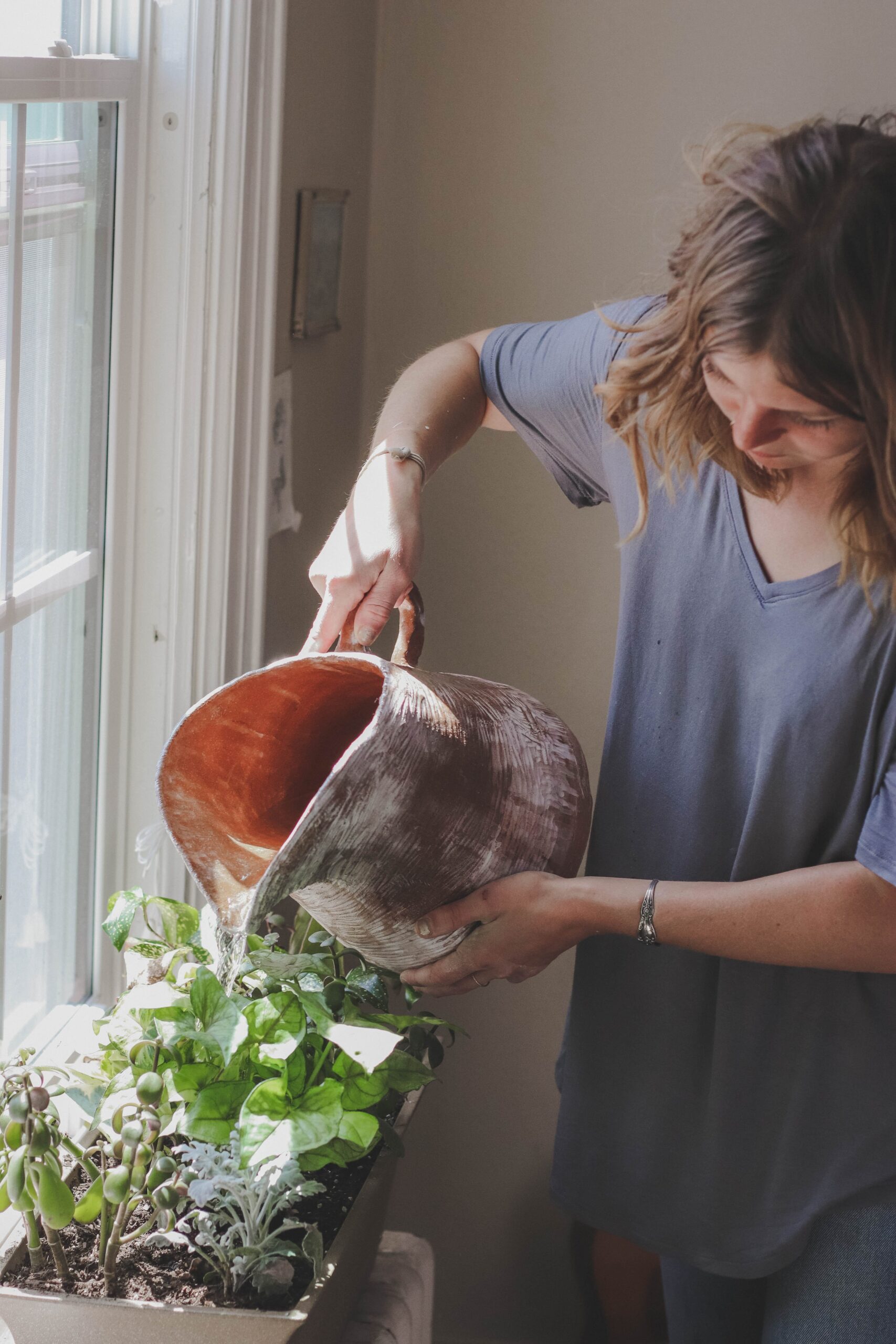
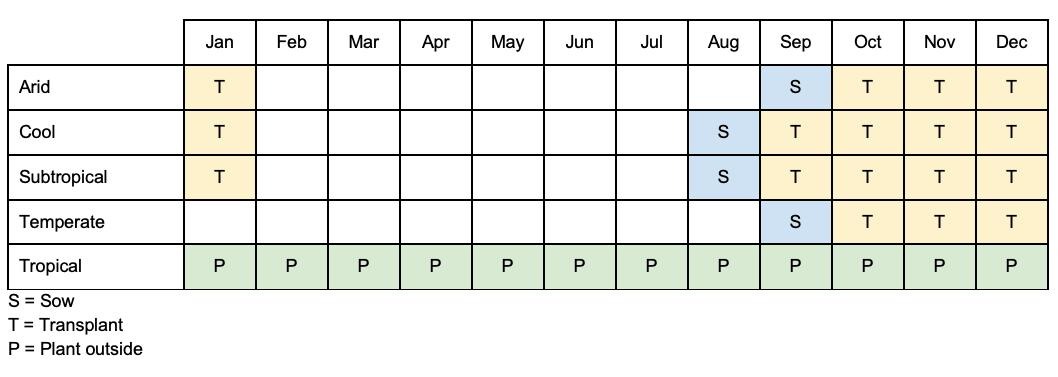
Growing basil pro tips
Soil: Prepare your soil before transplanting your basil plants outside. You’ll need rich and well-drained soil, so it’s a good idea to mix in plenty of compost. Basil’s ideal soil temperature is between 18°C and 30°C.
Mulch: If you live in a hot, arid climate you might want to consider using a straw mulch around your plants to keep the soil moist and avoid it drying out.
Water: Basil requires moist soil to thrive, so water your plants little and often. If you’re soil appears too wet and your plants are standing in water, then give them several days to recover.
Fertiliser: Your basil may not need feeding if your soil is rich enough. However, if your plants appear to be growing slowly then give them a little help, apply a dry and well balanced, slow release fertiliser once or twice during the growing season.
Companion plants: Basil and tomato isn’t just a match made in heaven on your plate, the two plants are also companions in the veggie patch. Others include oregano, chillies and eggplant.
How and when to harvest Basil
We’re confident that you’ll know when your basil leaves are ready to harvest, but this is generally around 10 to 12 weeks after transplanting them outside and perhaps earlier if you’ve kept them indoors. Snipping flower buds will allow your plant to focus its energy on growing delicious leaves but rather than waste the flowers, keep them, they are extra aromatic and great for cooking. Harvest the leaves regularly to promote plant growth but be careful not to harvest more than half of the leaves at once.
How to prepare/preserve Basil
Basil leaves taste fantastic when they are freshly harvested. If you wish to preserve the fragrance of your leaves for a later date however, freeze them in an airtight bag to lock those flavours in. Another great way to preserve your basil is to dry out the leaves. Simply pick your leaves and space them out on a tray, leaving them in a well-ventilated room. After a week the basil should be completely dried out. Crumble the leaves into an airtight container and enjoy them at a later date!
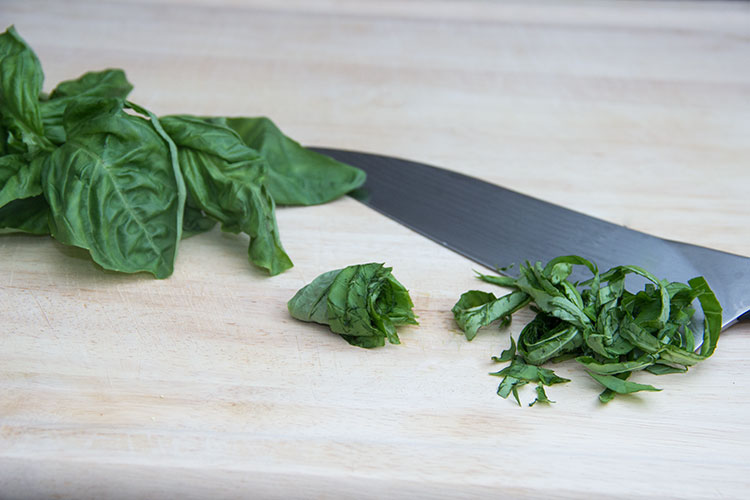
Basil Recipes
Perhaps the most popular recipe for garden fresh basil is a good old homemade pesto sauce. Ditch the supermarket jar and follow this recipe on how to make pesto. If you’re growing Thai basil and you’re looking for a quick lunch then try out this delicious 15 minute Thai basil chicken recipe. Or perhaps you’re more in the mood for something fresh; then we recommend this robust eggplant and garlic Caprese salad. Like it’s good friend Mint, Basil is also a great addition to cocktails, so get your mixology hat on, and make yourself a glass of basil smash, made with fresh basil, gin, lemon and sugar – enjoy!
